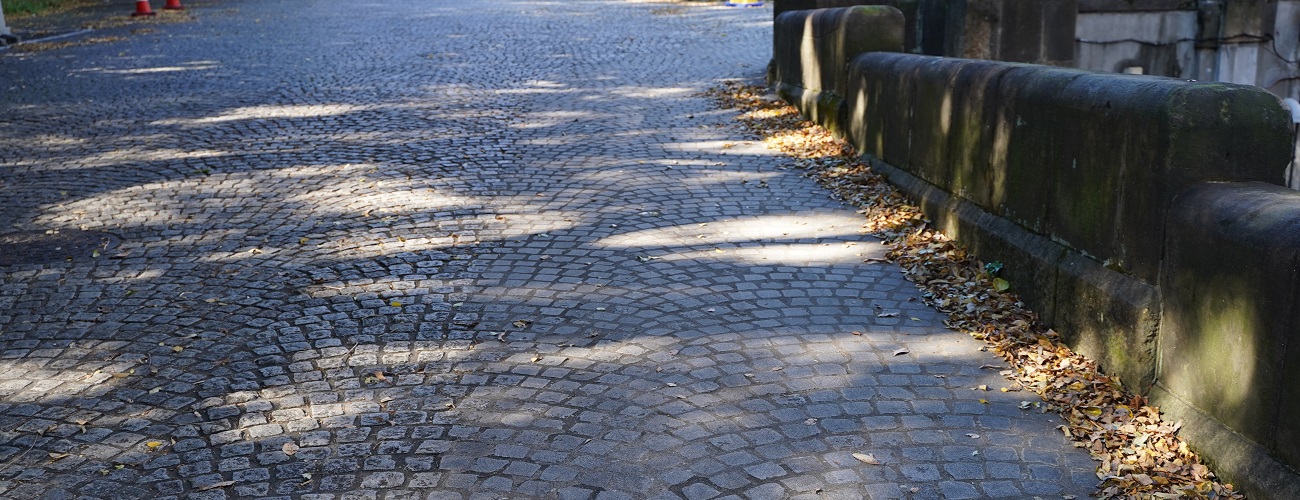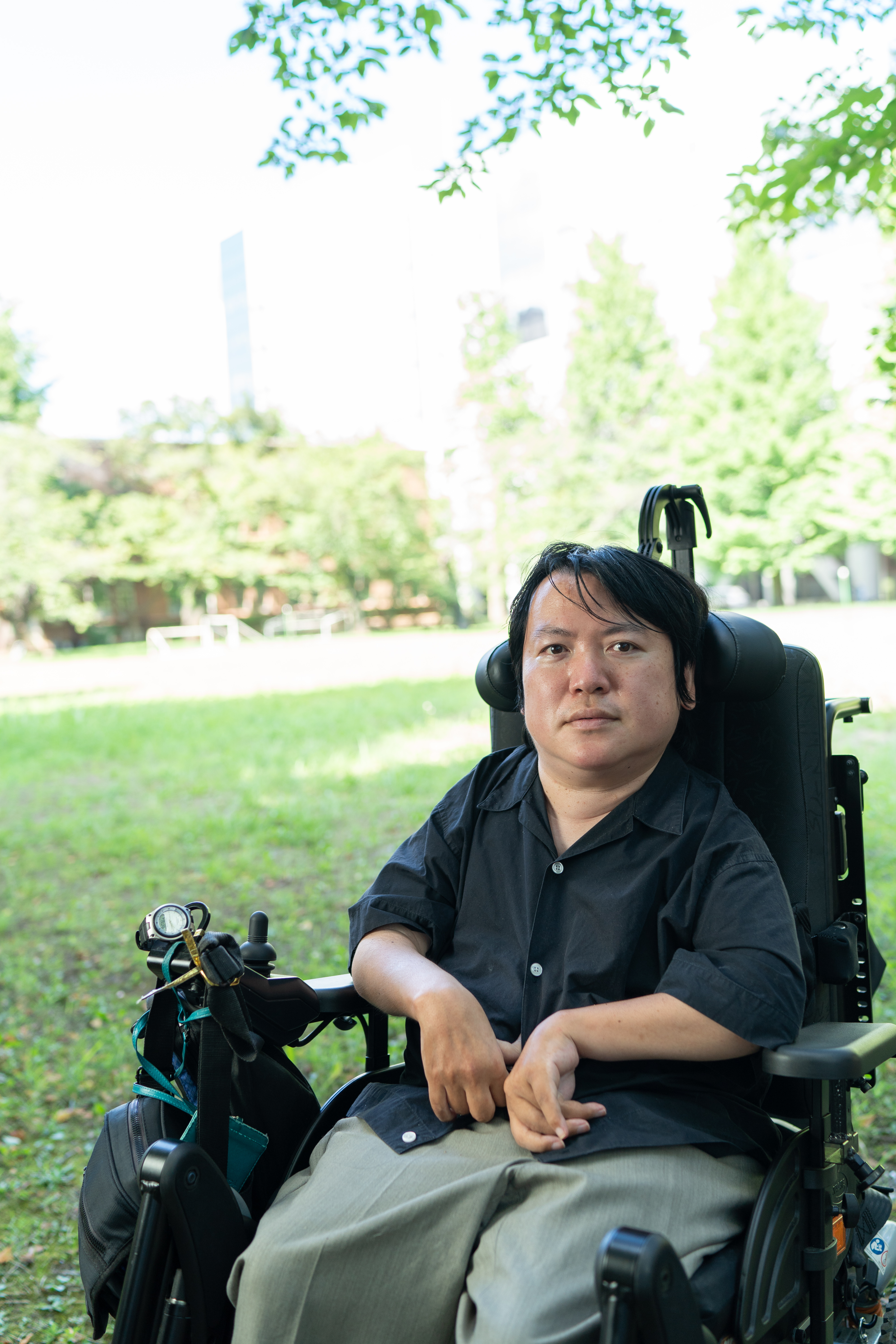Understanding, partnership cultivate barrier-free culture | Diversity and UTokyo 04 | Associate Professor Shinichiro Kumagaya

This series looks into diversity-related issues and initiatives at UTokyo, through interviews with faculty members. The university strives to create a place where people with diverse backgrounds can thrive.

A slope on the south side of Yasuda Auditorium on the Hongo Campus is paved with cobblestones. As the uneven surface can be hazardous for wheelchair users, the university scraped it down to create a 2-meter-wide path, which is smoother and more level.
During an interview held online on a rainy day in late October, Associate Professor Shinichiro Kumagaya of the Research Center for Advanced Science and Technology described how hard it is for him to go to campus on a day like this. Kumagaya, who was born with cerebral palsy — a neurological disorder affecting muscle movement and coordination due to brain injury at or around birth — and uses a wheelchair, usually dons a raincoat to cover his body and his wheelchair in wet weather. That, he explained, makes simple movements like taking out a train ticket from his pocket difficult. Getting around in the rain also can be more hazardous due to low visibility. But as the COVID-19 pandemic prompted people to work from home and hold meetings and classes online, such burdens have greatly eased, he said.
“The pandemic has drastically changed the circumstances for people with disabilities,” said Kumagaya, who heads UTokyo’s Disability Services Office (DSO), where he has served as director since 2017.
While the pandemic has reduced the stress of traveling for wheelchair users like Kumagaya, it has created new challenges for people with other disabilities. Students who are hard of hearing, for example, used to have student note takers sitting next to them in class in the pre-pandemic days. By reading the notes, or sometimes if a sign language interpreter was present, they understood what was being taught in class. But as the classes moved online, students with hearing loss struggled to follow lessons, Kumagaya said.
“It’s like sitting in a cockpit,” Kumagaya said. “They have to look at the notes sent by support staff, while watching the class on Zoom. Sometimes, they even have to send feedback to the note takers. The multitasking can be extremely difficult.”
As the pandemic has drastically changed the working and learning environments, the DSO has dealt with such emerging issues with the use of technologies and operation systems. But what became clear was a lack of awareness and understanding among faculty was creating a bottleneck, Kumagaya explained.
“They need to use their imagination and craft their classes assuming that there could be students who are hard of hearing. Otherwise, no matter how hard we work behind the scenes, we won’t be able to solve these issues,” he said. “I believe all the members of the university need to raise their awareness (of the challenges people with disabilities face). Otherwise, I don’t think the services and classes offered by the university will ever become wholly accessible.”
The roles of the Disability Services Office

The University of Tokyo launched the DSO in April 2004 in a bid to create a campus where everyone, regardless of disability, has equal access to the university’s programs and services. Based on the social model of disability, which says disabilities are created by the way society is organized rather than caused by any personal conditions, the office has been making efforts to eliminate the barriers faced by students, faculty and staff with disabilities by changing the environment rather than asking individuals to change themselves.
The DSO bases its support on an interview with a student before or after they enter the university. Together with support staff from the student’s department, DSO members with specialized training and knowledge hold meetings with the student to understand in detail about difficulties and things they need help with. Based on these hearings, which are conducted with those who request them, the office draws up a support plan.
The DSO also holds an annual meeting for students, faculty and staff with disabilities to exchange opinions. Hearing what others are feeling helps those who get so used to enduring difficulties in their daily lives, to revisit their needs, Kumagaya said.
The voices collected at these gatherings are passed on to the relevant departments to make the campus more accessible. One such example is the cobblestone road surface on the south side of the main entrance of Yasuda Auditorium on the Hongo Campus. The uneven surface can be hazardous for wheelchair users, such as thin tires getting stuck between the cobblestones. As repaving with concrete was not an option to be in harmony with the surrounding scenery of the campus and the auditorium being designated an Important Cultural Property by the Japanese government, and other aspects, the university instead scraped and flattened the surface to make it smoother and level.
By accumulating such know-how, Kumagaya said the DSO now sees the path it needs to take for making the physical environment of the campus, such as building and facilities, barrier free. But the same cannot be said for institutional barriers, including rules and operations, as well as cultural aspects, such as people’s attitudes and habits, he said, adding that the office needs to start from discussing about the best way to work on those elements.
But the issue, Kumagaya pointed out, is that as more concrete systems are put in place with the involvement of the DSO, people will start to develop the mindset of just leaving matters up to his office to deal with. To avoid such a situation “it’s crucial to cultivate the culture, rather than making it all about systems,” he said.
Changing behavior
In a bid to create an inclusive culture, the office is currently preparing both a faculty and a staff development program with the help of faculty who specialize in studying gender, ethnicity, LGBTQ and other areas related to diversity and inclusion. Kumagaya is hoping to release the programs early in the next academic year, starting in April 2022.
Although the DSO had in the past initiated study sessions to raise awareness among faculty and staff, the initiative fell short of changing behavior, Kumagaya explained. This time, with the goal of changing people’s behavior, Kumagaya is planning to incorporate active learning, such as discussions or group work, in the programs currently in development.
When changing a culture, the important thing is to become acquainted with others as they are, rather than judging them based on the groups they belong to, he said, and that will help eliminate the stigma attached to some groups. “It is very important to work together toward a shared goal as equal partners, to have both the majority and the minority collaborate and engage with the common goal of creating an inclusive campus,” Kumagaya said. “The essential thing is to have people participate, and not to leave it to someone else.”






